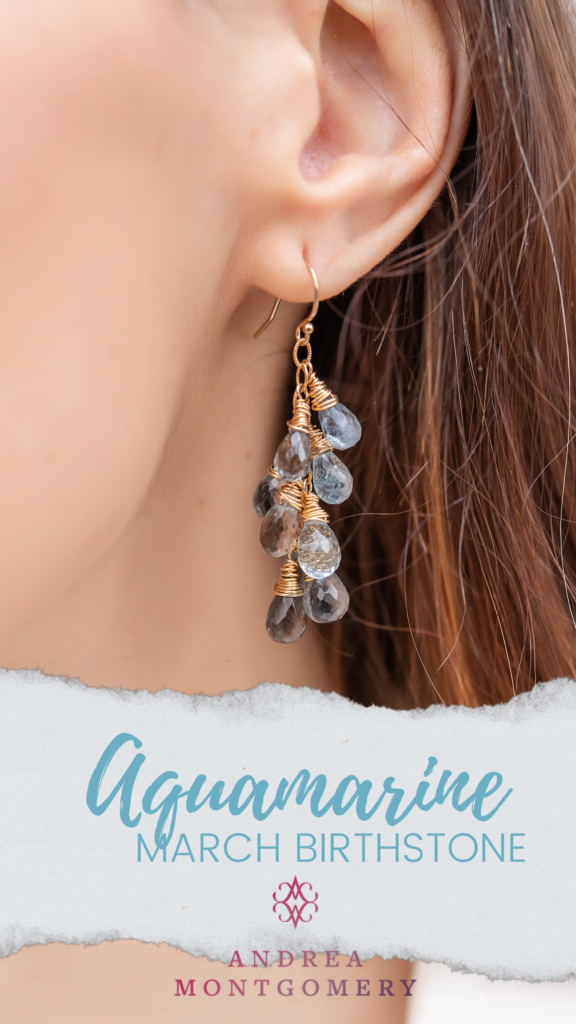

Aquamarine is the birthstone for the month of March and the gemstone for the 19th anniversary. Its name comes from the Latin words “aqua”, meaning water and “marina” meaning of the sea and it was said to keep sailors safe at sea. The beautiful hue certainly conjures up images of tranquil blue waters. Cut aquamarines are often free from inclusions and clear, just like the waters they’re named after.
Typically a light pastel blue, aquamarine is the green-blue to blue variety of the mineral beryl. Emerald is the green variety of beryl. Two of the most famous locations for aquamarine mining are Brazil and Pakistan, where they are mined at extremely high altitudes of up to 14,000 feet! They can also be found in Kenya, Madagascar, Nigeria, Zambia, Mozambique, China, Myanmar, Russia, Ukraine and even here in the USA. Stateside, you can find them in Colorado, where aquamarine is the state gem, and in Southern California. Aquamarine ranks at a 7.5-8 on the Mohs scale of hardness, making it durable enough for daily wear and should be cleaned using warm water and mild dish soap, though ultrasonic cleaners and steam cleaners are usually fine to use as well.
Moss Aquamarine has a more greenish color with the blue, due to iron deposits in the stone, which also brings more inclusions and therefore, less clarity. Their beauty is astounding and they can command a high price! Copper Aquamarine is aquamarine that has real flecks of copper inside, making a really unique looking stone.
One of the most famous aquamarines is the one Brazil gave to Eleanor Roosevelt on her trip to Rio de Janeiro in 1936 with President Roosevelt that was 1,298 carats. If you’re headed to the Smithsonian anytime soon, be sure to check out the gemstone believed to be the larges faceted aquamarine in the world, the Dom Pedro Aquamarine, weighing in at 10,363 carats (over 4 and a half pounds!)
We think aquamarine is beautiful and is perfect for a beachside vacay – or for reminding you of one when you’re stuck in the carpool line! Check out our aquamarine collection below!






Leave a Reply